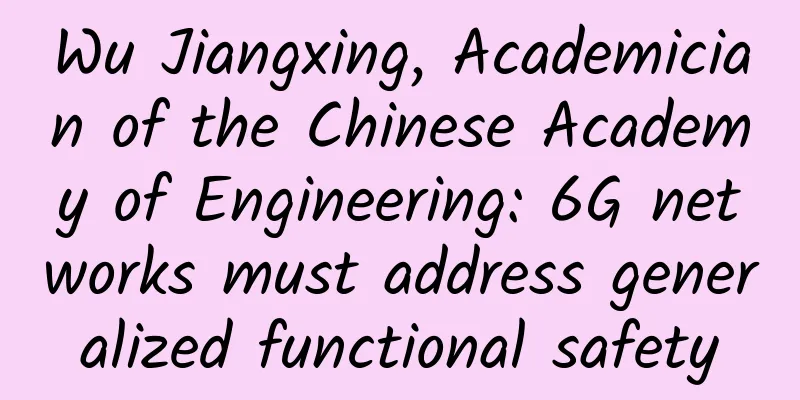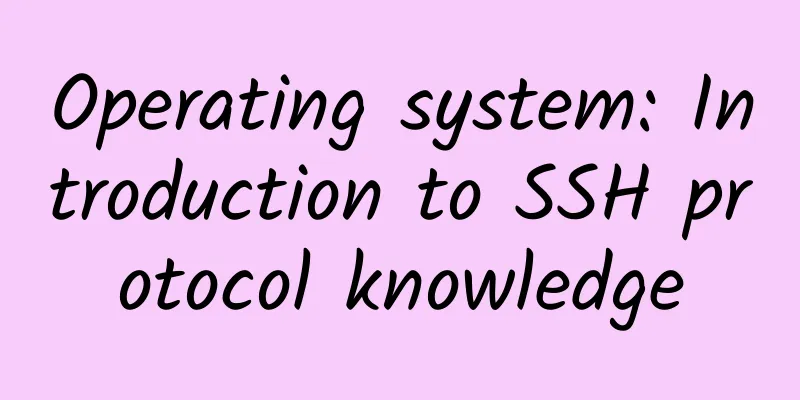Wu Jiangxing, Academician of the Chinese Academy of Engineering: 6G networks must address generalized functional safety

|
Recently, the Future Mobile Communications Forum hosted the "Global 6G Technology Conference" with the aim of building a global scientific and technological cooperation platform and a bridge for collaborative innovation, forming relevant recommendations for promoting 6G research and development, and striving to promote the cultivation of a globally consistent 6G concept. Together, we will create a good environment for global 6G development and contribute to the formation of a globally unified 6G standard and the sustainable development of the information and communication industry. At the roundtable forum on "Key Technologies of 6G Wireless Network Security Architecture" held on March 24, Wu Jiangxing, an academician of the Chinese Academy of Engineering, stated that as an important supporting technology for intelligent connected infrastructure after 2030, 6G can no longer continue the traditional path of pursuing leaps in single technical indicators such as coverage, bandwidth, and latency. Instead, it is necessary to explore and open up a new paradigm for sustainable and coordinated development of multiple objectives such as technical performance, cost investment, energy consumption, safety and reliability, and continuous efficiency. Wu Jiangxing believes that the endogenous security system is the basic architecture, and other security technologies play a role in filling and reinforcing this architecture. "The security architecture of the 6G network must be endogenous to solve the problem of generalized functional safety. If 6G does not have generalized functional safety, then other security technologies are useless, just like sand and soil mixed with cement and sand, which cannot be called concrete." Since the concept of endogenous security was first proposed, it has been gradually accepted and recognized by the industry. In fact, the proposal of the endogenous security paradigm provides the industry chain with a new way of thinking to solve network security problems. "Endogenous security is based on construction technology, rather than built-in or embedded in existing technology." Wu Jiangxing said that endogenous security can accommodate other security technologies and use a variety of integrated means to jointly deal with a variety of potential risks. In Wu Jiangxing's view, AI is not an intrinsic security technology because the analysis results of AI are unexplainable, unidentifiable and unreasonable. Blockchain is not an intrinsic security technology either because it relies on blockchain nodes, and common-mode vulnerabilities and backdoors exist in software and hardware nodes with a market share of >51%. "The essence of generalized functional safety is the expansion and extension of the traditional functional safety (reliability) concept under network attack conditions." Wu Jiangxing said that generalized functional safety is an enabling technology for cyberspace-related technologies, with broad compatibility and openness. It can be integrated with traditional external security protection technologies or systems to form a coordinated defense horizontally, and can be integrated with other security protection technologies or systems on the intelligent network infrastructure platform to form a deep defense vertically. |
Recommend
Accelerating digital transformation, 5G empowers the next generation of new industrial manufacturing
[[335662]] The COVID-19 pandemic has imposed mand...
If all operators become Yang Bailao, what will they use to build 5G?
At the IT Summit held in Shenzhen, someone finall...
New report identifies progress and benefits across the 5G network lifecycle
Infovista welcomes TM Forum’s new industry survey...
"4.5G": LTE-Advanced Pro users will grow rapidly
According to foreign media reports, market resear...
China's Ministry of Industry and Information Technology: 2017 marks the first year of large-scale commercial use of the Internet of Things
Since the international standards were finalized ...
5G and machine learning: Transforming cell towers from smart to genius
[[335632]] 5G ushers in new “genius” networks to ...
Learn how to manage and protect cabling systems
When choosing the transmission medium for the cab...
Reshaping Wi-Fi Infrastructure for the Future of IoT
As the digital age continues to evolve, a major c...
How will HTTP and DNS protocols evolve in the 5G era?
HTTP and DNS have almost become two household pro...
Seven distributed global ID generation strategies, which one do you prefer?
[[415300]] After using microservices, many proble...
spinservers San Jose China Telecom network independent server simple test
A few days ago, the tribe shared the test informa...
5G technology and its impact on the Internet of Things
5G is the latest generation of cellular network t...
In the era of intelligent IP, Huawei injects new momentum into the industry and releases the white paper on smart charging pile IoT technology
[51CTO.com original article] On September 25, at ...
What is OSI model?
Today I tweeted some thoughts about how the OSI m...
Why is the price of GPRS module as low as ten yuan? My experience in the localization process of IoT module
The development history of the entire communicati...









